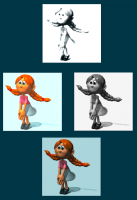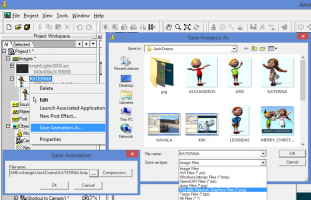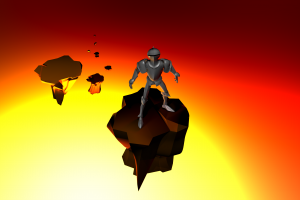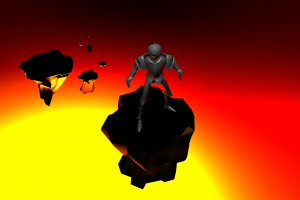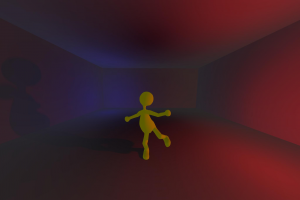-
Posts
21,649 -
Joined
-
Last visited
-
Days Won
119
Content Type
Profiles
Forums
Events
Everything posted by Rodney
-
That's still a must see classic for the holidays, Robert. (It and you are) still awesome after all these years.
-
Hi Steve, One of the great things about our community is that we'll build you custom tutorials based on your queries here. There are just too many things that could be tut'd to create a tutorial that covers everything for every possible situation. After all, you don't really want a tutorial... at least you shouldn't... you want to create something cool with the info you'll discover in those tutorials! So don't be shy... just point us in the direction of your interest. Welcome to the forum!
-
It's always interesting to see how tech folds back upon itself. The latest buzz word in cg hair is something of a convergence between hair and cloth. Super Space Clothoids Whitepaper SIGGRAPH 2013 There is tech/math going on here which I don't claim to follow but when I suggest folks consider using geometry for hair this is the general idea and when one considers the possibilities much of what is outlined can already be created with A:M.
-
A:M is full of surprises. Most people use other programs to manipulate and convert images but A:M can do it's fair share of image manipulation too. (apologies for using your images as an example below... hey, what can I say... she's a very cool character) You may find in the long run that images such as Targa and EXR are best for usage but those formats aren't viewable in most browsers either. There are a lot of knowledgeable folks here in the forum so if you've got any questions just let us know. Edit: Hmmmm... the girls eyes going white in the grayscale image on the right... I think I accidentally dialed up the transparency or perhaps I forgot to turn off the transparency keycolor.
-
I like to use a freeware program called Irfanview to convert images (I see they've recently released an update too!) When in doubt though you can use Animation:Master to render to internet friendly image formats such as JPG and PNG. Your version should have a fast way to convert is that you can open an image in A:M and Right Click on it's name in the Project Workspace listing and select "Save Animation As". You then select the format you want and hit enter. You don't have to save a series of images... you can convert just one image as well but... this is a very fast way to convert dozens or hundreds of sequential images. What format you want to use will depend on your desired results. For instance, if you wish to have some part of your image show through (transparency) then PNG is a good format to use (JPG images don't store transparency). I'm pretty sure there is a video tutorial describing this process but in the meantime I've attached a screen shot: Well, drat and double drat. Still, very fine looking characters!
-
Looking very good Jack. Your style hits right in the middle of the old Rankin Bass and Davy and Goliath stop motion characters... and boy is that a classic look if there ever was one. Nice! I like them all but those green and red characters with the guy with the glasses... very intriguing. I"m looking forward to seeing and hearing more about your short film. Please pardon my editing of your post. I converted your bitmaps into internet friendly jpeg images so that others can more easily see your characters. (Hopefully I didn't miss any) And... welcome to the forum!
-
Hash Inc is virtual... no one there on weekends... or weekdays. Send an email to jason@hash.com and he'll get it regardless of the day. (Jason is a machine. He never sleeps) FWIW... messages posted here only show up on their radar when someone in the community emails the forum link to Jason. So either way it's best to email Jason.
-
Gerald, Thanks for this info... very useful indeed. I'm rendering a test AVI to the Techsmith screencapture codec in 64bit A:M as we speak.
-
Paul, Let me know when you'll have a free moment and I'll be there. Friday, Saturday and Sunday are the toughest times for me... Monday night, Tuesday (all day)... Thursday (all day) are optimal. Getting to Springfield will give me a good reason to visit my Mom as well. 6th of January... you don't say... that's a Monday! Monday the 6th through the 9th eh? Launch me an email (rodney.baker@gmail.com) with specific time/place and I'll be there! Pie in the sky stuff... perhaps during a later visit we can try to get a few more folks in the area to get together. I know there is a least one spliner that lives in Springfield (haven't met him either). Since I work the night shift my internal clock is always messed up so I can meet any hour of the day. We can swap sad stories of sad stories not told indeed.
-
Congratulations Malo! I too was wondering who put that image together as it didn't have any tell tale signs of who had splined it together. Very impressive work!
-
I like that approach. Let us know how it works out for you! And the added benefit... you've got a comic book to go along with your movie.
-
I didn't care for the blackness of the top of the rocks so went back in and splashed a little light there. Not sure if it improved anything but at least it's no longer black there. (adjusted the rocks and knight as little as well)
-
Here's another random lighting test that just came out of the renderer. Basically the same setup as the previous one with the lights moved around and color altered. The box room was replaced by a cylinder room.
-
There's not much of anything in that render. Thom, a box room, three lights; two of which contribute to the shadows.
-
Despite the nasty banding in this rendering, this is another random lighting test that I like. It's the muddied painterly quality that appeals to me as shown in the back corners of the room. The spill-over of color into shadows is something I'd like to study more too.
-
If I would have known you were in the area I might have driven to Springfield and bought you lunch. Heck, I might have even been there on one of my visits as that is where my Mom lives.
-
John, I've never had to wait for a renewal as it's generally an automated thing. If you renewed via the Hash Inc store the activation code should be there. Log in to your account and the activation code should be found in the order confirmation. If you purchased in some other way please disregard.
-
Nicely done! Congratulations to all and especially to Nancy!
-
Hi doobie! There are several places we can hide objects and selections in A:M. We can also lock parts down which for many tasks might be better than hiding. As for Hiding, when Modeling look for an eye that has a red circle and line drawn through it over on the right. For locking of Control Points use the padlock icon. As of v18 we can also Shift Hide to hide (or Shift Lock to Lock) and the shift will invert the selection. Prior to v18 those processes generally require us to hit the period key to invert our selection just prior to hiding. If in a Choreography window you'll see in the Project Workspace listing an eye next to the item that allows the object to be hidden. Let us know if you can't find these. Edit: I should have mentioned... by default the shortcut key for 'Hide' is 'H. Draw a spline, select a part of it, hit H to try it. Hit 'H' again or click on the Hide icon to unhide.
-
Nicely done Robert! I always enjoy these multi-part performances. Impressive.
-
Mark... that is such a 'instant' classic. (although we all know it wasn't instant on your end!) What can I say except you are supremely talented. And you sure know how to hit your deadlines! Very well done!
-
Several short 'Making of' videos are online providing insight into the making of this ad. Here's one I hadn't seen until today that focuses on the 2D part: F9EmxVv4Gh8 These 'making of' video are short. This one right at 2 minutes long.
-
New Aaron’s Art Tips has been posted: 4qJUO1eO4Ws Summary (please pardon spelling mistakes etc. as I'm just typing quickly from memory and filtering content through my brain): Ads/Plugs: Wacom Cedric Hornsteadt's Pose Drawing Sparkbook (Note: I joined the kickstarter on this one and recieved it in the mail a few weeks back. Nice book... great gift for young artists especially! Concepts easily transferred to CG) Basic ideas/content: 'Drawing' from reality (that is to say... pulling the real into your imaginary concepts/work to improve upon and ground those ideas) Using Reference to ground the imaginary into reality Evolutionary Progression Anatomy/Bone structure Playing God Current freebie offered (not mentioned in this tip but now available on site): Sign up for Aaron's newsletter and get a PDF booklet: "How to Draw Elephants". Note that these tips generally run about 15 minutes to include intro, plugs, summary etc. Aaron is excellent at covering a lot of material quickly and concisely. General Disclaimer: I accept the term 'evolution' to mean living things adapting to a given environment although others don't differentiate in this same way. As creative creatures we evolve/adapt our creative concepts and ideas similarly. As such evolution is a useful if not unfortunate term to me. It fits but only when understood in proper context. It's interesting to note what is being described in this video is equally the 'ungrounding' of reality by adding to it a large yet logically progressive dose of pure fantasy.
-
Hey Shawn, it's great to have you back!
-
Here's a simple case to illustrate... How to reproduce: - Create a two CP spline - Lathe with 4 sections (other cross sections can also be used but 4 illustrates this error well) - Extract the top half out of the cylinder and rotate (for readying the shape to lathe a sphere) - Rotate by typing in 90 degree rotation on X axis - Note error introduced to Alpha and Gamma at top of "C" shape - Also note that this takes place prior to lathing the sphere










